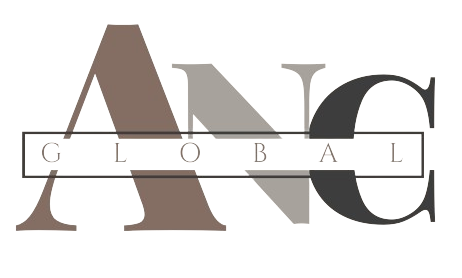CEO Transitions 2025: Proven HR Strategies for Leadership Success
CEO transitions are pivotal moments for any organization, shaping its strategic direction, market perception, and long-term performance. In 2025, the complexity of these transitions has intensified due to shifting economic conditions, digital transformation, and heightened stakeholder expectations. According to PwC, nearly 20% of global CEOs were replaced in 2023, highlighting the increasing fluidity in top executive roles.
Key Trends in CEO Transitions for 2025

Increased CEO Turnover Amid Economic Uncertainty
Global economic volatility continues to drive higher CEO turnover rates. In response to inflationary pressures, shifting market dynamics, and geopolitical uncertainties, boards are prioritizing leadership agility and resilience. According to PwC’s CEO survey, nearly 70% of executives believe leadership adaptability is critical for business survival. Companies are leveraging executive succession planning to ensure business continuity during transitions.
Shorter CEO Tenures and Higher Expectations
CEO tenures are becoming shorter as performance expectations rise. Investors and boards demand faster results, with many CEOs expected to deliver transformational change within their first 12–18 months. Organizations are implementing performance-driven evaluation metrics to assess leadership effectiveness in real-time.
Emphasis on CEO Cultural Fit and Employee Engagement
Cultural alignment is a top priority in CEO hiring. Research shows that companies emphasizing cultural fit in executive transitions see 30% higher employee engagement. New leaders are increasingly evaluated on their ability to sustain and enhance workplace culture. Cultural diagnostic assessments are becoming standard practice in onboarding strategies.
Rise of Interim CEOs and Leadership Flexibility
Boards are opting for interim CEOs more frequently to ensure smoother transitions. This trend reflects the need for strategic continuity while long-term leadership plans are developed. Organizations are using leadership development programs to cultivate internal candidates and reduce reliance on external hires.
Higher Board Oversight and Governance
Boards are taking a more hands-on role in CEO transitions, focusing on leadership performance, strategic alignment, and risk management. Companies are enhancing governance frameworks to support CEOs in meeting stakeholder expectations while maintaining corporate stability.
As CEO transitions become more complex, HR-driven succession strategies are essential for ensuring leadership success and long-term business growth.
Greater Focus on Digital and AI-Driven Leadership
With the rise of artificial intelligence (AI), automation, and digital transformation, companies are prioritizing CEOs with strong technological expertise. Organizations across financial services, healthcare, and retail are appointing leaders who can drive AI adoption, cybersecurity advancements, and digital innovation.
Justin Hotard, previously an AI and data centre leader at Intel, was appointed as Nokia’s CEO to accelerate digital transformation within the company. Organizations must align new leadership with digital upskilling programs to enhance executive decision-making in tech-driven industries.

Recent CEO Transitions (2024–2025)
Anne Wojcicki Steps Down as CEO of 23andMe
In March 2025, Anne Wojcicki, co-founder and CEO of genetic testing company 23andMe, resigned following the company’s filing for Chapter 11 bankruptcy. The bankruptcy aims to facilitate a sale that maximizes business value. Despite these challenges, 23andMe has committed to maintaining normal operations and safeguarding customer data. Interim leadership requires careful executive coaching and crisis management to maintain business continuity. Joe Selsavage has been appointed as interim CEO during this transitional period. (Source)
Tan Su Shan Appointed as CEO of DBS Group
Tan Su Shan has been named the new CEO of DBS Group, Singapore’s largest bank, marking a historic appointment as the first female CEO in the bank’s history. Tan, who has been with DBS for 15 years, succeeded Piyush Gupta during a period of record revenue and profits. Her strategic focus includes pursuing “bolt-on” acquisitions to enhance the bank’s wealth and transaction banking operations, as well as investing in digital and AI capabilities to navigate economic and market uncertainties. Organizations undergoing leadership transitions must align new strategies with cultural transformation initiatives to ensure workforce engagement and adaptability. (Source)
Tilman Fertitta Announces Resignation as CEO of Landry’s Inc.
Houston billionaire Tilman Fertitta has announced his intention to resign as CEO of Landry’s Inc. and other executive roles in anticipation of his potential confirmation as U.S. ambassador to Italy and San Marino. Fertitta will also step down from positions at Fertitta Entertainment LLC, which owns subsidiaries such as Landry’s Inc., the Houston Rockets, and Golden Nugget Casinos. For companies experiencing CEO departures, implementing change management strategies ensures smooth leadership transitions while maintaining operational efficiency. Despite these resignations, Fertitta will retain ownership of the Houston Rockets, as it does not pose a significant conflict of interest with his prospective ambassadorial duties. (Source)
Justin Hotard to Lead Nokia as New CEO
In February 2025, Nokia announced the appointment of Justin Hotard as its new CEO, succeeding Pekka Lundmark. Hotard, previously the Executive Vice President and General Manager of Data Center & Artificial Intelligence at Intel, brings extensive experience in technology and business leadership to the role. To maximize the impact of new leadership, companies should leverage CEO onboarding programs that align new executives with strategic goals and stakeholder expectations. (Source)
These leadership changes underscore the evolving landscape of corporate governance and the strategic shifts companies are undertaking to navigate current economic and technological challenges. Organizations investing in structured leadership development programs gain a competitive advantage by preparing executives for success in an ever-changing business environment.
Key Challenges in CEO Transitions
Strategic Continuity vs. Change Management
A CEO transition often raises questions about an organization’s strategic direction. While some companies seek continuity, others demand a bold shift to remain competitive. Striking the right balance between legacy preservation and innovation is crucial. Misalignment between incoming leadership and the board can lead to operational inefficiencies and stakeholder uncertainty. Our executive succession planning solutions help businesses anticipate leadership shifts and align new strategies with long-term business goals.
Cultural Fit and Employee Confidence
A new CEO brings fresh perspectives, but cultural misalignment can disrupt workplace engagement. According to McKinsey, organizations that prioritize cultural fit in executive hiring are 30% more likely to experience a smooth leadership transition. Ensuring alignment between leadership style and company values fosters employee trust and retention. Our culture and values workshops provide structured approaches to integrating new leadership while preserving company identity.
Managing Internal vs. External Successions
Internal promotions provide stability but may limit fresh perspectives, while external hires can invigorate a company but require careful onboarding. Striking the right balance requires a robust succession pipeline and comprehensive executive assessment frameworks. ANC Global specializes in leadership development programs that prepare internal candidates for leadership roles while also offering structured onboarding frameworks for external hires to ensure seamless integration.
HR-Driven Strategies for CEO Transitions
Executive Succession Planning for Long-Term Stability
A proactive succession plan is the cornerstone of smooth leadership transitions. Companies that develop CEO readiness programs minimize disruptions, retain institutional knowledge, and ensure long-term business continuity. Without a structured plan, organizations risk leadership vacuums, misaligned strategies, and instability among stakeholders.
Our Approach:
- Leadership Readiness Assessments – Evaluating potential successors using behavioral analytics and performance benchmarking to identify leadership gaps and growth areas. Our leadership assessment frameworks offer in-depth evaluations to ensure readiness.
- Cross-Functional Executive Development – Creating structured mentorship programs that expose high-potential leaders to various business functions, preparing them for executive roles. Learn more about our executive coaching programs designed to cultivate future CEOs.
- Emergency Succession Protocols – Establishing contingency plans to address unforeseen leadership departures. Companies that fail to plan for sudden transitions often experience stock declines, operational setbacks, and employee uncertainty.
For organizations seeking to future-proof their leadership pipeline, our leadership development solutions offer tailored programs that drive executive excellence.
CEO Onboarding: The First 100 Days Strategy
The first 100 days define a CEO’s trajectory, influencing employee morale, investor confidence, and organizational momentum. Without structured onboarding, even the most qualified executives face unnecessary hurdles, increasing the likelihood of misalignment and operational setbacks.
Key Focus Areas:
- Strategic Alignment Workshops – Immersing new CEOs in company history, vision, and operational priorities. These sessions ensure that executive leaders understand key business challenges from day one. Our leadership transition playbooks offer step-by-step guidance for effective onboarding.
- Stakeholder Engagement Roadmaps – Establishing structured interactions with board members, investors, and key employees to facilitate relationship-building and goal alignment.
- Quick-Win Initiatives – Identifying early impact areas that allow CEOs to demonstrate leadership effectiveness quickly, building trust among employees and stakeholders.
At ANC Global, we leverage customized onboarding frameworks to accelerate executive acclimatization, reducing transition risks and enhancing long-term leadership impact.
Cultural Integration and Change Leadership
Navigating organizational culture shifts is critical when a new CEO takes charge. Misalignment between leadership style and company values can lead to increased attrition, disengaged employees, and strategic disruptions. A strong cultural integration strategy minimizes resistance and maximizes engagement.
Our Approach:
- Cultural Diagnostic Assessments – Conducting surveys and interviews to measure alignment gaps between new leadership and company values. Our culture assessment tools identify strengths and areas for improvement.
- Change Communication Strategies – Structuring transparent messaging to manage employee expectations. Companies that fail to communicate leadership changes effectively often face trust deficits and internal resistance.
- Inclusive Leadership Training – Equipping executives with tools to drive diversity, equity, and inclusion (DE&I) initiatives. Organizations with strong DE&I programs are more likely to retain diverse talent and foster innovation. Learn more about inclusive leadership development tailored to executive transitions.
For organizations undergoing cultural transformations, our culture and values workshops provide actionable insights to foster alignment and strengthen organizational identity.
Performance-driven CEO Evaluation Metrics
Clear success metrics are essential to evaluate a CEO’s impact. Companies that implement outcome-based performance reviews enhance accountability, drive strategic alignment, and ensure leadership effectiveness.
Key Metrics:
- Financial Health Indicators – Measuring CEO impact through revenue growth, EBITDA, and shareholder value.
- Operational Efficiency Measures – Tracking employee engagement scores, productivity benchmarks, and cost optimization efforts. Our continuous feedback mechanisms support real-time performance evaluations.
- Innovation and Market Expansion – Assessing contributions to new product launches, digital transformation progress, and global footprint expansion. Companies that prioritize innovation under new leadership are more likely to sustain competitive advantage.
We integrate real-time performance tracking systems to ensure data-driven decision-making, enabling organizations to measure CEO impact effectively.

How ANC Global Can Empower Your Business

CEO transitions are defining moments for any business. Whether it’s an internal promotion, an external hire, or an M&A-driven leadership change, the right HR strategies ensure smooth transitions and sustained success.
At ANC Global, we specialize in tailored HR solutions that mitigate risks, enhance leadership effectiveness, and future-proof organizations. Contact us today to explore how we can support your next leadership transition.
Explore More from Our Services
Explore More from Our Insights
- Imposter Syndrome: Why Women in Startups Might Hold Back
- Pay Parity and Its Effects on the Global Economic Crisis
- Why Middle Managers Make or Break Organizations
- Unseen Struggles: How Microaggressions Shape Workplace Experience
- Harnessing Collective Intelligence for Transformational Change
- Adaptive Leadership: Navigating a Dynamic Symphony
- Saudi Arabia Surges Ahead in MENA Venture Capital
Table of Contents
Reach Our Global Consultants
- Employee Disengagement: Your Fault or the General Environment’s?
- How to Develop a Strategic Workforce Plan: A Guide for HR Directors
- How Your Head of HR Helps the CEO Win: The Strategic Edge No One Talks About
- Is AI Killing Creativity in your employees?
- Top 3 Issues on the Minds of MENA Board Directors in 2025
